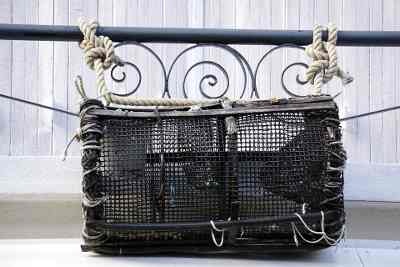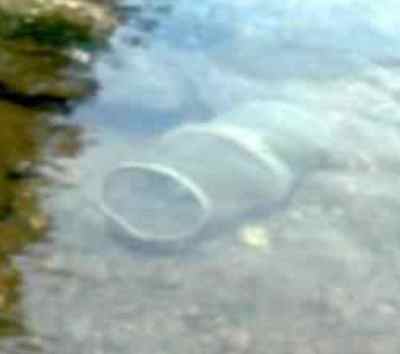Your Basic Passive Fish Trap Design

Fish will tend to follow the walls of a small container. For example, if you put a fish in a bucket the fish will swim in circles. Fish in huge public aquariums often have calluses built up on their mouths because they are constantly rubbing up against the sides. When a fish caught in a trap can reach the opening in two different ways. One in can swim directly to the opening and escape. This is not likely because it would be like threading a needle with your eyes closed. The other is if the fish is following the sides of the trap and reaches the opening. If they reach the opening this way there is almost no chance the fish will make a nearly 180 degree turn and exit the trap. Fish tend to travel relatively straight when unmolested.
Fish traps have the advantage of fishing while you are away. Fish traps can be left unattended for days without being checked. So although it is unlikely a fish in a funnel trap will escape, if you leave the fish in there long enough it can eventually hit the jackpot and swim right on out. For this reason, modern fish traps of this design often have more than one chamber, i.e., more than one funnel. The fish by chance alone will be directed deeper and deeper into the trap. So once at the back if they hit the jackpot and make it back out of the last funnel they still must hit the jackpot again almost immediately or they will again find themselves at the back of the trap.
Usually these traps are used without bait, but certainly bait can be used to attract fish into the trap as well. In streams all that is needed is to place the trap with the opening arranged such that the funnel opening is situated such that fish swimming upstream will be funneled directly into the trap. This might seem counter to what you would think, but trust me, facing the trap in the opposite direction will result in much few fish caught.
Use a little imagination and adapt the fish trap to the materials you are able to scavenge. The size of the trap depends on what you want to catch. Bigger fish require bigger traps. Traps vary from 2 liter minnow traps on up to huge woven traps that can be in excess of 10 feet long.
 If building a primitive trap without modern material here is one method. You will need a bunch of small saplings about 4 feet long. Let's say you should try to use about 7 but this can be any odd number you want. Due to the weaving you do not want to use an even number of saplings. So 5,7,9 etc. is what you need. The more you use the stronger the body of the trap will be.
If building a primitive trap without modern material here is one method. You will need a bunch of small saplings about 4 feet long. Let's say you should try to use about 7 but this can be any odd number you want. Due to the weaving you do not want to use an even number of saplings. So 5,7,9 etc. is what you need. The more you use the stronger the body of the trap will be.
Tie all of the saplings to a piece of wood about 2 or 3 inches in diameter and 6 to 12 inches long. This keeps the ribs in place all bound to the back of your trap. Next, create a hoop using a piece of vine to form the other end of the trap and secure the ribs, saplings, to it. This will form the basic cone shaped shell of your trap.
Next is to weave the walls of the trap with whatever you can find that is suitable. Long strips of sapling bark works great, but you can use reeds or long thin yet strong vines. I prefer vines as it is easier to get longer "strings" of cordage with vines vs strips of bark.
The cordage is attached to a rib and then weaved over then under than over then under each successive rib until you reach the end of that piece of cordage. Once well into the weaving which starts at the back you can remove the ring vine from the front of the trap and the ribs should all retain the cone shape. Remove the hoop too soon and the ribs will flail around too much. The only reason to remove the hoop is so that the weaving will go faster. You will see why especially if your cordage is long.
When you have almost reached the top/front of the trap simple lash the last few wraps together in a few spots.
To make the funnel of the trap you basically do the exact same thing again just on a slightly small more quickly tapering design and instead of lashing the ends of the ribs to a 2 or 3 inch stick instead stab them into the ground to form a circle of the size of the fish you want to catch, 3-6 inches is typical. Start your weaving at the ground and work your way up the ribs. The ribs will need to spread out quicker than the main body of the trap did. Once complete you should have a funnel with a hole of the proper size and top should be about the same diameter of the trap body.
Now lash the funnel to the trap body.
Now simply place the trap in a pond or stream and check it periodically. Slowly lift the trap from the water and the water will quickly drain out leaving behind a flapping fish for supper. Reach through the hole and retrieve your reward.
Traps made from modern materials will last much longer and are more durable. The natural traps will tend to float so inserting a weight inside or on top of the trap may be necessary to prevent the trap from floating.
I always simply tied a string to the trap and tossed the trap into the water. The string allows me to stay dry yet reach deeper water and more eating sized fish.
Back To Traps
